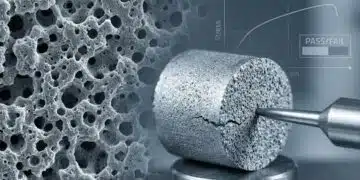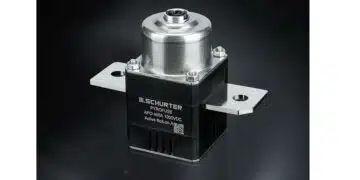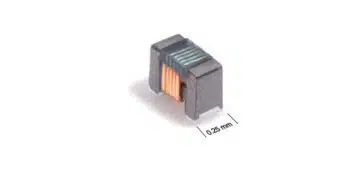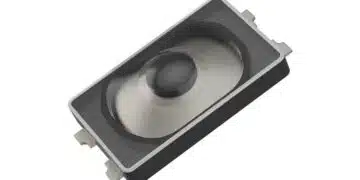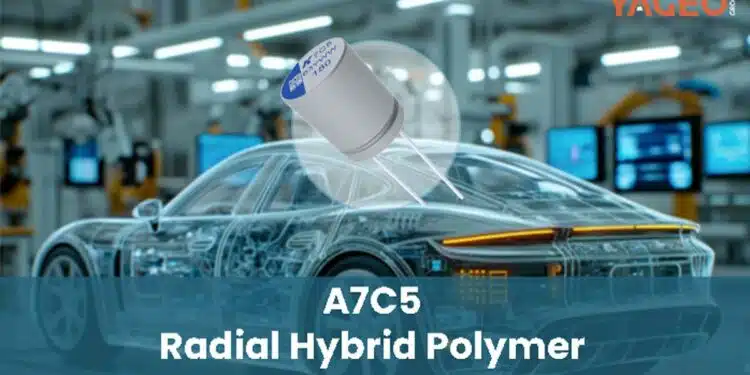Combining superior capacitance, mechanical robustness, and thermal resilience YAGEO releases A7C5 hybrid radial aluminum capacitor for high-performance power applications.
YAGEO, a global leader in electronic components, announced the release of its new A7C5 Hybrid Radial Aluminum Capacitor, designed to meet the evolving demands of modern power electronics.
The A7C5 series blends the high capacitance and self-healing benefits of liquid electrolytic capacitors with the low equivalent series resistance (ESR) and stability of polymer capacitors, all within a reliable through-hole form factor.
Engineered for applications requiring mechanical robustness, high ripple current handling, and extended temperature endurance, the A7C5 provides a dependable solution for challenging environments.
While surface-mount device (SMD) capacitors are favored for compact designs and automated assembly, YAGEO’s radial hybrid capacitors excel in scenarios involving thermal cycling and through-hole assembly preferences.
Key Features of the A7C5 Hybrid Radial Capacitor:
- Through-Hole Form Factor: Ideal for designs emphasizing mechanical strength and wave soldering processes.
- High Ripple Current Handling: Supports up to 4.0Arms at 135°C, catering to power-dense applications.
- DC Voltage Range: 25-63V
- Capacitance Range: 47 – 820uF
- Extreme Temperature Tolerance: Operates effectively up to 150°C for 1,000 hours in demanding conditions.
- Low ESR & Self-Healing: Integrates a conductive polymer (PEDOT/PSS) system with liquid electrolyte impregnation for enhanced performance.
- Enhanced Mechanical Stability: Withstands vibration and mechanical stresses efficiently.
- AEC-Q200 Compliance: Certified for rigorous automotive and industrial applications.
- Environmentally Friendly: RoHS and halogen-free compliant.
Applications Include:
- Automotive Electronics: Powertrains, ECUs, and fuel injection systems
- DC-DC Converters: High-efficiency power conversion for industrial and automotive uses
- Power Modules: Motor drives, telecom base stations, renewable energy systems
- Harsh Environment Electronics: Industrial automation, power inverters, LED drivers
A7C5: A Smarter Choice for High-Performance Power Designs
YAGEO’s A7C5 Hybrid Radial Aluminum Capacitor delivers unmatched durability, thermal resilience, and ripple current performance, making it an indispensable component for demanding power applications. With ongoing developments in the hybrid capacitor family, YAGEO is committed to expanding its offerings to meet diverse application needs.
Explore the A7C5 today and enhance your design with the latest in hybrid capacitor technology!




